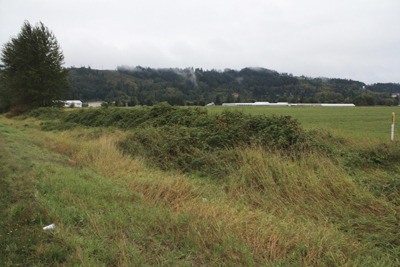This is the first in a five-part series on Orton Junction. The full original story appeared in the Winter 2011 Sumner Magazine, released Nov. 30.
On the outskirts of the land to Sumner’s south—the land designated to become Orton Junction—the emptiness is overwhelming.
There are, of course, trees. And some surrounding farms. The roads that branch through them are no-frills two-lane asphalt with nary a shoulder to pull onto; what shoulder there is, is rough gravel and probably encroaching dangerously on someone’s front yard.
In all the sound and fury over what these 126 acres would become, it might have been easy to forget there is nothing here yet. There are no big box stores—which were either imminent, impossible, or improbable depending on who you asked—ready to wink into existence; there are no malls waiting like huns at the gates.
What Orton Farms LLC—the Orton Junction property holder—has is a handful of interested parties and one vested interested party: Pierce-Kitsap YMCA.
“As a policy, we don’t typically share information on clients, but MultiCare and East Pierce Fire and Rescue have both looked at the area for possible buildings,” Timothy Farrell of Investco said. “People from both organizations, and YMCA, have spoken publicly in support of the project.”
It’s taken years for the company, owned by Michael Corliss of Investco, and the city of Sumner just to reach this point.
Background
Orton Junction was conceived as a new neighborhood of Sumner: 182 acres of commercial and low-density residential properties.
Orton Farms wants, naturally, the chance to turn a profit from developments on its long-term land investment. The city of Sumner—which approved the project in its 2010 Comprehensive Plan amendment—desires growth of homes, jobs and sales tax revenue.
The problem was that the lion’s share of that land—125.46 acres, to be exact—was designated as Agricultural Resource Land by Pierce County.
Agricultural Resource Lands are officially designated lands used for agricultural production or that can be used for long-term commercial farming, as defined by the Washington Administrative Code (WAC 365-190-050). In terms of evaluating lands that fall into the latter category, the overriding factor is the land’s potential for farming; whether the land owner actually intends to farm is not a controlling factor, as written in the code.
To have Orton Junction, Orton Farms and the city would need to convince the Pierce County Council to override the agricultural designation and allow development, via an amendment to the county Comprehensive Plan. Which they did, eventually.
In the lead-up to the Oct. 25 vote, the Pierce County Planning Commission and county staff recommended the council deny an amendment allowing Orton Junction, based on the presence of the designated agricultural lands. During that time, the neighboring city of Bonney Lake also came out in opposition to the project. City councilmembers argued in a letter to the county that Sumner had misrepresented a vacuum of larger commercial enterprises in the area by omitting Bonney Lake’s nearby big box retailers.
“It’s direct competition to us up here,” Councilman Jim Rackley said.
Bonney Lake, however, stood in the minority when the issue came before the Pierce County Regional Council. The council of city leaders voted 14-4 to recommend an amendment by the county council.
Land preservation advocates Futurewise and Friends of Pierce County, as well as a number of independent preservationists, joined in opposing the amendment on the grounds of losing prime agricultural land. Controversy was such that public testimony in county council chambers took hours at a time, with dozens of citizens and stakeholders coming to the podium to argue both sides; the final vote of approval was delayed by more than a month.
In the interim, the city worked with Orton Farms and Forterra (then called Cascade Land Conservancy) to draft a “Seven Principles Agreement” that laid out a number of land impact mitigation measures, most notably a requirement that each acre of agricultural land lost be replaced by four acres of conservation-eased properties; an unprecedented ratio.



